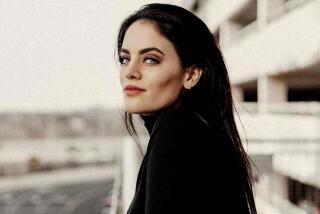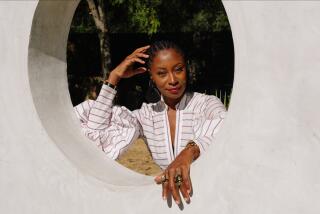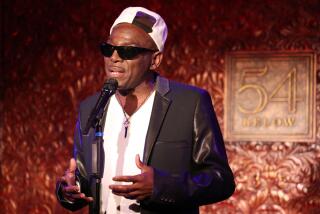Marion Scott dies at 86; returned to dancing at 62 , staged performances by aging artists
Marion Scott, a noted dancer, choreographer and teacher who returned to the stage at the age of 62 and in her 80s mounted concerts that displayed the talents of aging artists like herself, died Oct. 5 in Los Angeles. She was 86.
The cause of death was not disclosed, but Scott had been in declining health for several years.
Scott ran her own dance company in New York for 20 years before moving west in 1969 to become resident choreographer of UCLA’s dance company. She became a force in the local modern dance community, mentoring prominent choreographers such as Hae Kyung Lee and organizing Spirit Dances, a collaborative dance group whose members ranged in age from their 40s to their 80s.
“Marion showed the world that your creativity never stops, that what you have to offer and share is only richer as time goes by,” said Roberta Wolin-Manker, a Santa Monica College dance instructor who produced many of Scott’s shows.
“You can dance as long as you can move,” Scott once said, explaining the credo that shaped her last years.
Born in Chicago on July 24, 1922, Scott began dancing at the age of 5. As soon as she finished high school, she left Chicago and moved to New York, where she studied with Martha Graham, Jose Limon and other masters of modern dance. She danced in Graham’s company as well as with Doris Humphrey and Charles Weidman. From 1959 to 1963, she was a lead dancer in the Tamiris-Nagrin Dance Company.
She also directed the Marion Scott Dance Company and in 1963 received the Doris Humphrey Fellowship at Connecticut College, the highest honor at the time for modern dance choreography.
In 1968, when she was 46, she stopped performing because of crippling arthritis. The next year, she began a bicoastal life, leaving her businessman-husband Ivan Rosalsky, and their two college age children on the East Coast to pursue her new career at UCLA.
She is survived by her husband, of Montclair, N.J.; daughter Lynn of Clifton Park, N.Y.; son Peter of Swarthmore, Pa.; twin sister, Anita Chadwick of New York; and three grandchildren.
Wolin-Manker, who studied at UCLA under Scott in the 1980s, said her former teacher had the ability “to nurture and bring forth the uniqueness of each of her students.”
Her worsening arthritis led to two hip replacement surgeries in the early 1970s and struggles with depression. She continued to create new pieces, however, and danced out her despair alone in her living room.
She also tried Rolfing, a rigorous form of massage therapy that slowly improved her suppleness. By 1985, the dance veteran, then 62, returned to performing with Visions, an all-women collective she founded whose members included performance artist Rachel Rosenthal and Lee, another former student who became an internationally known choreographer.
In a 1985 review, Times critic Lewis Segal wrote that Scott’s solo in a Visions program “developed from weighty groveling to buoyant gestures of affirmation . . . a statement of one woman’s connection to something beyond the personal.”
In 1999, when she was 77, Scott embarked on a series of programs that she called “Spirit Dances,” a name meant to suggest a healing effect on the dancers and the audience.
The concerts ranged from a tribute to Isadora Duncan to an exploration of masks and movement. Another program, called “The Crones,” focused on older women performing their own dances. She inspired a number of retired dancers to perform again, including Allegra Fuller Snyder, former head of the dance department at UCLA.
When Scott invited Snyder to participate in Spirit Dances, “I said, ‘You’re crazy. I’m old and decrepit and haven’t danced in a long time,’ ” recalled Snyder, now 82. “I came to one rehearsal and was absolutely sucked right into it again. It was exciting for me, a new start to a very old love.”
Scott’s last performance was in April 2007 at Highways Performance Space in Santa Monica.
Despite a number of health setbacks, including congestive heart failure and strokes, she performed a piece she called “Prayer.” It began with Scott pushing her walker across the stage to a chair.
Accompanied by the third of composer Richard Strauss’ “Four Last Songs” about death, which speaks of the spirit flying “freely into night’s magic sphere,” she sat down in the chair, then stretched her arms toward a light.
“It just took everyone’s breath away,” recalled Jamie Nichols, who produced the show.
Woo is a Times staff writer.
More to Read
Start your day right
Sign up for Essential California for the L.A. Times biggest news, features and recommendations in your inbox six days a week.
You may occasionally receive promotional content from the Los Angeles Times.







